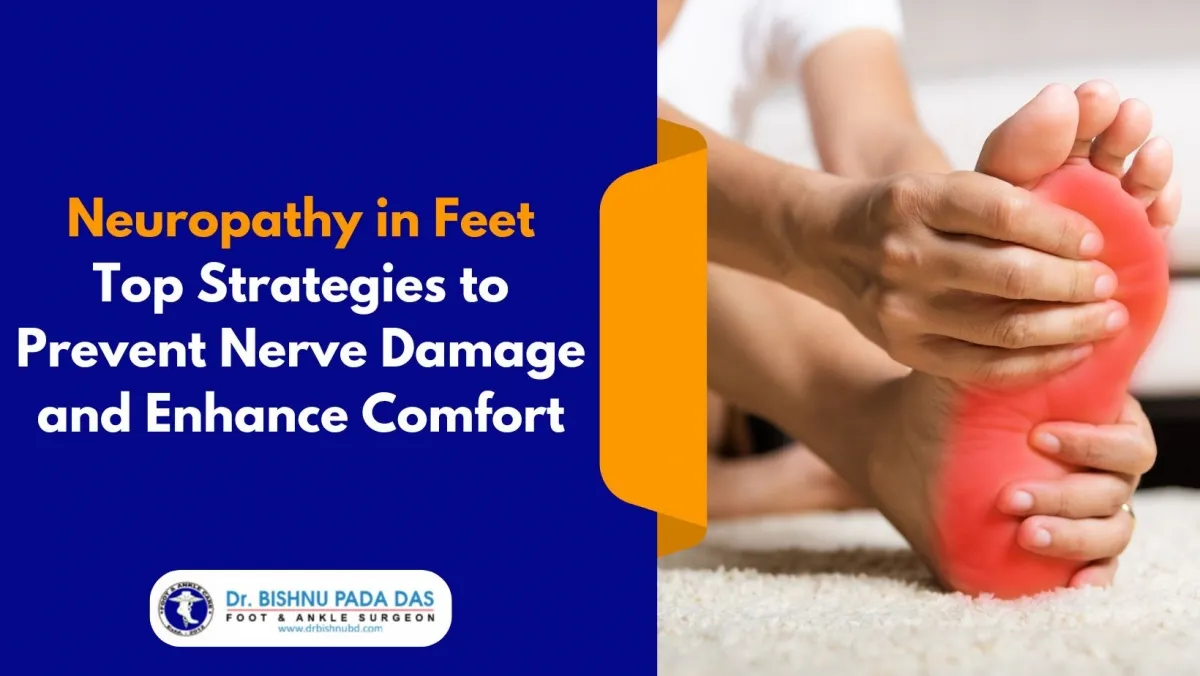
Common Foot Problems and Their Causes
Our feet bear the weight of our entire body, making them susceptible to various issues and discomfort. Many individuals experience common foot problems that can hinder their daily activities and overall well-being. Understanding the causes and symptoms of these conditions is essential for early intervention and proper management. In this article, we will discuss some of the most prevalent foot problems and their underlying causes.
Plantar Fasciitis: Plantar Fasciitis: Plantar fasciitis refers to a condition marked by inflammation in the plantar fascia, a strip of tissue spanning the underside of the foot. It often causes intense heel pain, especially during the first steps after waking up or after prolonged periods of rest. The primary causes of plantar fasciitis include overuse, poor footwear, high arches, flat feet, and sudden weight gain.
Bunions: Bunions are bony prominences that develop at the base of the big toe. They occur when the joint becomes misaligned, forcing the big toe to lean inward towards the other toes. Tight-fitting shoes, genetics, and certain foot deformities can contribute to the development of bunions.
Ingrown Toenails: Ingrown toenails develop when the side of a toenail grows into the adjacent skin, resulting in discomfort, redness, and swelling. Improper nail trimming, wearing ill-fitting shoes, and injuring the toe can lead to this uncomfortable condition.
Athlete's Foot: Athlete's foot, a fungal infection, commonly affects the spaces between the toes. It causes itching, redness, and flaky skin. This condition thrives in warm, moist environments such as gym showers and swimming pools.
Corns and Calluses: Corns and calluses are areas of thickened, hardened skin that develop due to repetitive friction and pressure. Corns typically form on the toes, while calluses are more common on the soles of the feet. Ill-fitting shoes and abnormal gait patterns can contribute to their formation.
Heel Spurs: Heel spurs are protrusions of bone that develop on the underside of the heel bone.They often occur alongside plantar fasciitis and can cause stabbing pain with each step. Repetitive strain and inflammation of the foot's tissues contribute to the development of heel spurs.
Metatarsalgia: Metatarsalgia is a condition marked by inflammation and pain in the metatarsal region, which is the area around the ball of the foot. It is often caused by excessive pressure on the metatarsal bones, which can result from high-impact activities, tight footwear, or certain foot shapes.
Shin Splints: Shin splints are characterized by pain and inflammation along the shinbone (tibia). This condition commonly affects athletes and individuals who engage in high-impact sports or activities without proper conditioning and support.
Understanding the causes of these common foot problems can help individuals take preventive measures to avoid discomfort and pain. If you experience persistent foot issues, it is crucial to consult a healthcare professional or a podiatrist for accurate diagnosis and appropriate treatment options.
Tips for Preventing Common Foot Problems
Our feet play a vital role in keeping us mobile and active, but they are often neglected until they start causing discomfort. Many common foot problems can be prevented with proper care and attention. In this article, we will share some practical tips to help you maintain healthy feet and reduce the risk of encountering common foot issues.
Choose the Right Footwear: Wearing well-fitting shoes is crucial for foot health. Make sure your shoes provide adequate support, have a wide toe box to accommodate your toes comfortably, and offer cushioning for shock absorption. Avoid high heels for extended periods, as they can strain the feet and lead to various problems.
Keep Feet Clean and Dry: Proper hygiene is essential for preventing fungal infections like athlete's foot. Cleanse your feet every day using soap and water, ensuring meticulous drying, particularly in the spaces between your toes.. Use foot powder to keep the feet dry, especially if you tend to sweat excessively.
Trim Toenails Correctly: To avoid ingrown toenails, trim your nails straight across and avoid cutting them too short. Do not round the corners, as this can encourage the nails to grow into the skin. If you have difficulty trimming your nails or have ingrown toenails, seek professional help from a podiatrist.
Moisturize Regularly: Dry, cracked feet can be uncomfortable and prone to infection. Apply moisturizing cream or lotion to your feet regularly, focusing on the heels and areas with calluses. Avoid putting lotion between the toes, as excessive moisture in that area can lead to fungal growth.
Wear Appropriate Footwear for Activities: Different activities may require specific types of footwear. If you engage in sports or physical activities, wear appropriate athletic shoes that provide the necessary support and cushioning for your feet. Avoid using worn-out or old shoes, as they may not offer adequate protection.
Practice Foot Stretches and Exercises: Regular foot stretches and exercises can help improve foot flexibility and strength, reducing the risk of conditions like plantar fasciitis and shin splints. Simple exercises like toe curls, calf stretches, and picking up small objects with your toes can be beneficial.
Maintain a Healthy Weight: Excess weight puts additional stress on your feet, increasing the likelihood of developing foot problems. Maintaining a healthy weight through a balanced diet and regular exercise can help alleviate this strain on your feet.
Seek Professional Advice: If you experience persistent foot pain, discomfort, or notice any unusual changes in your feet, consult a podiatrist or healthcare professional. Early intervention and proper diagnosis can prevent minor issues from developing into more significant problems.
By following these tips and taking good care of your feet, you can reduce the risk of encountering common foot problems and ensure that your feet remain healthy and pain-free, supporting your active lifestyle. Remember that each person's feet are unique, so it's essential to pay attention to your specific foot needs and address any concerns promptly.



